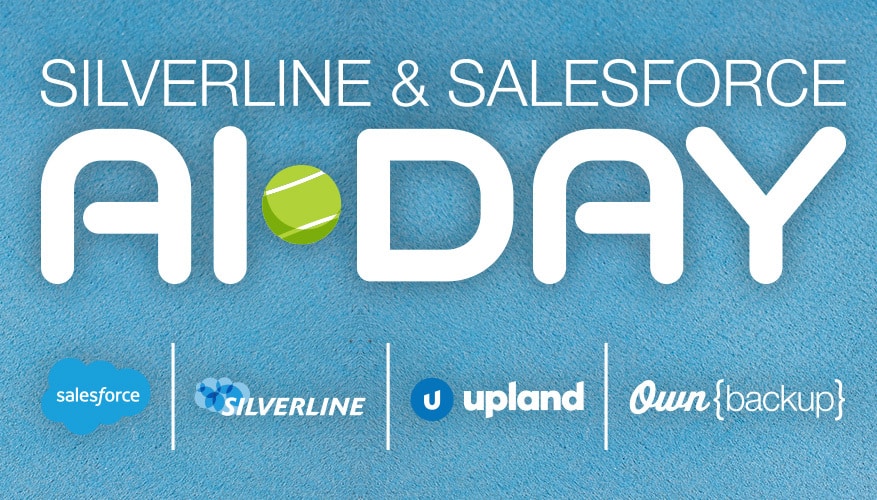Financial services firms today have access to mountains of data, from loan origination information to balances and market information — and it all can live in Salesforce.
But access is only the first step to making use of that data, and empowering your teams to make active decisions on key accounts. That’s where Tableau CRM (formerly Einstein Analytics) can be an impressive add-on for Financial Services Cloud.
I sat down with Tony Stegeman, Sr. Data Analysis Manager, Small Business Banking at Capital One, to talk through how their team uses Tableau CRM. Want to watch the entire webinar? Take a peek at the recording here.
Tableau CRM vs. Salesforce dashboards
Salesforce already comes with robust out-of-the-box dashboard and reporting capabilities. You can easily see at-a-glance how your team is performing. But Tableau CRM for Financial Services Cloud moves teams from reactive to proactive. With predictive analytics, lead scoring, and automatic recommendations, Tableau CRM can really take financial teams to the next level.
My job is to figure out ways to help our bankers by making their jobs better and more streamlined. My team uses data to give our bankers tools to help them do their jobs more efficiently. We’ve been using Tableau CRM for the past 18 months to do just that.
– Tony Stegeman, Sr. Data Analysis Manager, Small Business Banking at Capital One
With Tableau CRM, you can address use cases like:
- Predicting which open opportunities are most likely to close and visualizing pipeline forecasting
- Matching specific products to customers based on existing information and behavior
- Determining retention patterns for current customers to understand what makes them stay
- Understanding future production and comparing that against set goals or quota
We wanted to give leadership a dynamic report that really lets them see where we are, where we’re headed and how that compares to the goals that we set at the beginning of the year. The standard dashboards limit you to only using data within Salesforce, and they can be fairly static. By adding Tableau CRM, we can create dashboards that show key performance metrics right away and dig deeper. It’s so much easier to find what you need faster. – TS
More portfolio visibility = better decision-making
Tableau CRM can also integrate with external data sources, making it your one-stop-shop for all the data your team needs to make decisions and do their jobs effectively. Take pipeline reporting, for example. Many teams still use Excel-based spreadsheets, asking individual teams to tally up their numbers and report them up the chain.
We’ve taken out all of those layers and all of those Excel spreadsheets so it’s all the same reporting. By automating the whole process, we can make sure everyone is on track, and use predictive capabilities to help us forecast what’s coming next. With higher quality data in Salesforce, it’s easier for everyone. – TS
Rather than use clunky spreadsheets that can introduce human error, Tableau CRM automates the process. It’s no longer just a dashboard or a PDF — your reporting becomes something interactive that you can explore.
It’s our central hub for all of our other assets we’re creating. As the team has grown to use it, they really appreciate the ease of use. I think when things are designed correctly, it becomes intuitive and it’s just easy to follow the data and understand where it comes from.” – Tony Stegeman, Sr. Data Analysis Manager, Small Business Banking at Capital One
Enabling a more efficient team
As you dive deeper into the data, you can start to enable your team more effectively, too. Going back to the pipeline example, with every piece of data in Salesforce, you can understand which opportunities convert and drive transparency and accountability within your business users.
Our pipeline dashboard is our most used dashboard. We can visualize who’s really outperforming, who’s struggling, and dig into that by various product types and goals. So now we know what to coach and how to better give our team what they need to succeed. – TS
When everything is in one place, you can really embed tools directly into your team’s workflow. For example, when they navigate to an account page in Salesforce, they can see account-specific results, fluctuations, and other historical data to make it easier to engage with that account over time.
With Tableau CRM, it allows us to capture historical data and get all of that real-time, integrating it directly into the platform instead of forcing the team to go somewhere else for that information. We can centralize everything and get better data, which starts by providing value to the team.
– Tony Stegeman, Sr. Data Analysis Manager, Small Business Banking at Capital One
Centralize your data with Tableau CRM and Financial Services Cloud
Today’s financial professionals are busier than ever, and Silverline is here to help you implement an AI-powered solution like Tableau CRM. With growing client lists and increased expectations for personalized service, bankers and wealth advisors need to know where to focus. Learn how Tableau CRM for Financial Services can help your employees identify the right opportunities to engage their customers, and how centralizing your data can be a game-changer for your business. See how Silverline can help.




